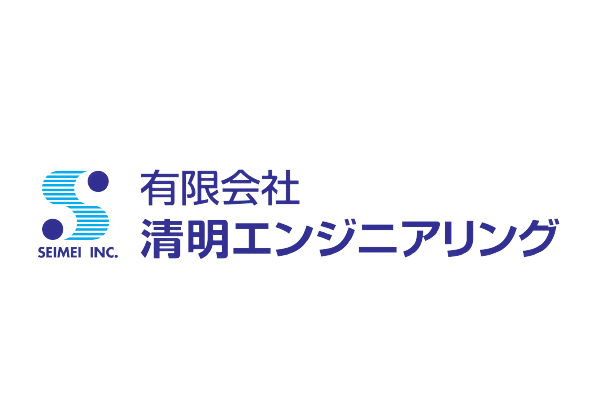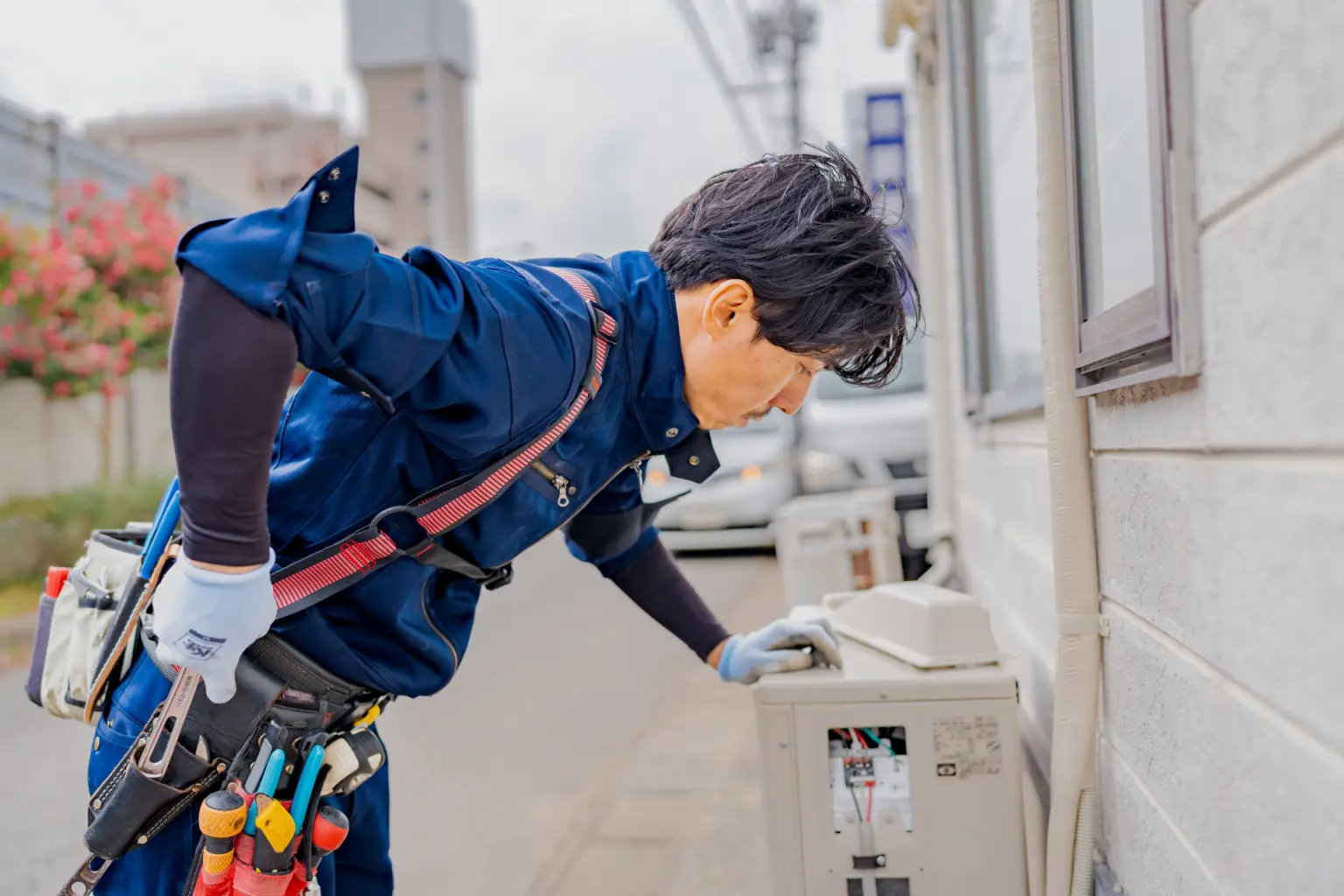Air conditioners play a vital role in maintaining a comfortable living environment.
However, every time they are used, dust and dirt accumulate inside, which gradually reduces their performance.
This effect becomes especially noticeable during the summer and winter when air conditioners are used more frequently.
To ensure longevity, regular inspection and maintenance are essential.
Proper inspection not only extends the life of the air conditioner but also enhances energy efficiency, helping to reduce electricity costs.
In this article, we will explore the importance of air conditioner inspections, practical methods, and the risks of neglecting them.
If you’re looking to extend your AC’s lifespan and lower your energy bills, this article will serve as a helpful guide.
We will also discuss the Fluorocarbon Emissions Control Act and mandatory inspections, providing valuable information for building managers and business operators.

Based in Hamamatsu, we specialize in the design, installation, and maintenance of commercial air conditioning, HVAC, and pump systems.
With over 30 years of proven experience and technical expertise, we help create comfortable environments.
Trusted by many publicly listed companies, we take pride in our reliability and responsive service.
We also operate a branch in Malaysia, expanding our reach globally.
Learn more about our company
Contents
- 1 The Importance of Air Conditioner Inspections
- 2 Types and Frequency of AC Inspections
- 3 Fluorocarbon Emissions Control Act and AC Management
- 4 How to Conduct an AC Inspection
- 5 Inspection Costs and Benefits
- 6 Benefits of Regular AC Inspections
- 7 Risks of Neglect and Countermeasures
- 8 Latest Maintenance Technologies
- 9 Conclusion: Regular Inspections for Long-Term Comfort
The Importance of Air Conditioner Inspections
Air conditioner inspections are crucial for maintaining a comfortable indoor environment.
In particular, avoiding malfunctions during high-usage seasons like summer and winter is essential.
By conducting regular inspections, you can prevent breakdowns and extend the lifespan of your AC, saving on replacement and repair costs.
Moreover, inspections play a significant role in improving energy efficiency.
Keeping your unit in optimal condition reduces wasted energy and lowers electricity bills.
For those striving for an eco-friendly lifestyle, regular checkups are a must.
Furthermore, for business operators and facility managers, regular inspections are legally required under the Fluorocarbon Emissions Control Act.
Failure to comply may result in legal penalties, making proper air conditioner management essential.
AC inspections contribute to efficient operation, cost reduction, and environmental protection.
Stay proactive with regular maintenance to enjoy a sustainable and comfortable lifestyle.
Types and Frequency of AC Inspections
There are mainly two types of air conditioner inspections: simple inspections and periodic professional inspections.
Both are critical processes to maintain performance and prevent issues.
Let’s take a closer look in the following sections.
Simple and Periodic Inspections
Simple inspections are basic checks that should be performed regularly.
They include cleaning filters, removing dust from outdoor units, and listening for unusual sounds during operation.
These simple steps help maintain performance and prevent degradation.
Periodic inspections, on the other hand, are carried out by professionals and include detailed checks like refrigerant leaks, cleaning internal components, and inspecting high-pressure systems.
Usually conducted once or twice a year, these inspections help prevent serious malfunctions and extend the unit’s life.
Combining daily simple checks with regular professional inspections ensures your AC operates in optimal condition.
Legal Inspection Requirements
For business-use air conditioners, legal inspections are required under the Fluorocarbon Emissions Control Act.
These inspections involve checking for refrigerant leaks and ensuring proper maintenance.
Frequency depends on the type and usage of the air conditioner, but it is generally recommended at least once a year.
Inspections must be performed by certified technicians to meet legal standards.
Failure to comply can result in fines and accelerated wear of your unit.
Proper inspections lead to long-term cost savings and environmental benefits.
Fluorocarbon Emissions Control Act and AC Management
The Fluorocarbon Emissions Control Act plays a crucial role in air conditioner management.
It was created to reduce the environmental impact of fluorocarbon gas leaks through rigorous maintenance and inspection.
Overview of the Act
Enforced by Japan’s Ministry of the Environment, this law was introduced in 1995 to manage the use and emissions of specific and alternative fluorocarbons.
Since fluorocarbons deplete the ozone layer and contribute to global warming, strict control and prompt repair of leaks are mandated.
Businesses must record inspections and maintenance, and only certified professionals are permitted to conduct detailed checks.
These measures reduce environmental impact while ensuring efficient AC performance.
Responsibilities of AC Managers
AC managers must regularly inspect units for abnormalities and refrigerant leaks.
Any issues found must be addressed immediately to avoid legal consequences.
They are also required to maintain accurate inspection records and submit reports as needed.
These actions ensure compliance and long-term reliability.
Proper management not only upholds the law but also helps maintain air conditioner performance and environmental sustainability.
How to Conduct an AC Inspection
Routine maintenance is key.
Common tasks include cleaning filters, checking refrigerant levels, and inspecting electrical systems.
By performing these tasks regularly, you can extend the life of your AC and maintain a comfortable environment.
Inspection Checklist
Clean the filters
Dirty filters reduce efficiency. Wash them at least once a month.
Check the outdoor unit
Ensure nothing is blocking airflow. Debris or leaves should be cleared away.
Check refrigerant levels
Low refrigerant affects cooling performance. Have a technician check and refill if needed.
Inspect the drain hose
A clogged hose can cause leaks. Ensure water flows freely.
Inspect electrical systems
Faulty wiring can cause malfunctions. Confirm everything is in good working order.
Test the operation
Run the AC and listen for strange sounds or vibrations. Call a technician if anything seems off.
Simple Checks You Can Do Yourself
Clean the filters monthly with a vacuum or water.
Ensure the outdoor unit has proper airflow.
Replace the remote control batteries if unresponsive.
Run the AC briefly to check for irregular noise.
Inspect and clean the drain hose.
These basic steps can help prevent major issues.
Professional Inspections
Hiring a professional brings several benefits:
Detailed internal checks
Including motors, compressors, and refrigerant leaks.
Refrigerant refills
Ensure optimal cooling performance.
Deep cleaning
Removes dust and mold from heat exchangers using specialized tools.
Safety checks
Prevents risks like fire or electric shock.
Maintenance plans
Many providers offer routine service packages for peace of mind.
Inspection Costs and Benefits
While inspections cost money, the benefits far outweigh the expenses.
They extend lifespan, reduce energy usage, and cut repair costs.
Cost of Inspection
Simple home inspections: ¥3,000–¥5,000
Thorough checks: ¥5,000–¥10,000
Business-use equipment: ¥30,000 and up
Routine contracts may offer discounts.
Always ask for a quote and know what’s included.
Energy Savings
Clean filters improve efficiency by over 20%
Refrigerant checks ensure optimal performance
Annual savings on electricity can range from thousands to tens of thousands of yen
Regular maintenance also prevents costly emergency repairs or replacements.
Even setting the temperature just 1 degree higher can cut energy use significantly.
Benefits of Regular AC Inspections
Extended Lifespan
Cleaning and maintenance prevent internal damage, preserving performance and avoiding unnecessary strain.
Failure Prevention
Identifying issues early reduces the chance of breakdowns during peak use.
Comfortable Environment
Well-maintained units deliver clean, consistent air without noise or uneven temperatures.
Risks of Neglect and Countermeasures
Neglecting inspections increases the risk of failure, costly repairs, and discomfort.
Early Detection
Routine checks catch problems before they worsen, avoiding major expenses.
Legal Risk of Skipping Inspections
For business-use ACs, skipping mandatory inspections under the Fluorocarbon Emissions Control Act can lead to administrative action and fines.
Keeping proper records and working with certified technicians is essential to remain compliant.
Latest Maintenance Technologies
IoT-Enabled Inspections
New technologies allow real-time monitoring of AC operation.
IoT sensors track temperature, humidity, and performance, issuing alerts for abnormalities.
This helps prevent issues and manage maintenance schedules efficiently.
Conclusion: Regular Inspections for Long-Term Comfort
Regular AC inspections help prolong equipment life, prevent breakdowns, and reduce electricity costs.
They’re especially critical during high-usage seasons.
Complying with regulations also supports environmental protection.
By making inspections a routine part of AC use, you’ll enjoy a comfortable and worry-free living space year-round.


